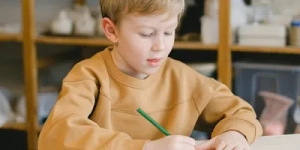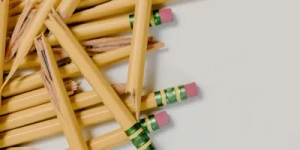Spelling and Writing
Writing and spelling go hand in hand. Help your student be a better writer by helping them be a better speller. Knowing phonics, root words, prefixes, suffixes, and homonyms, helps students become fluent writers. If they struggle to spell words correctly, they will struggle some to write.
v Spell it for them. When students ask how to spell a word, spell it for them if you know how. You can help them figure out how to spell it. But rarely if ever make them look up their misspelled words in a dictionary. Students have a lot to process when they are learning how to write. When they have to also look up words, it distracts them from other skills. Let them stay focused on the task at hand. Spelling errors should be corrected but don't let spelling get in the way of writing.
Focus on developing spelling skills at other times.
v Get a good phonics curriculum. I used ABEKA Phonics and Sing, Spell, Read and Write with my 3 kids. Both spelling curricula were good. Saxon Phonics, Bob Jones Phonics, Spelling Power, and Hooked on Phonics are all good. More good spelling programs are available.
v Teach Latin and Greek. Basic Latin and Greek help kids understand more spelling patterns. Our language is based on Latin and Greek. Students should learn Latin and Greek prefixes, suffixes, and roots. Their spelling will improve and vocabulary will increase. I recommend English from the Roots Up or Word Roots. http://www.criticalthinking.com/word-roots.html
v Study homonyms. Many spelling errors are because of homonym misuse. In one lesson per level, homonyms are studied. Create a game where students have to match each homonym with its correct definition. Have your students use note cards to write each homonym on a card and each definition on another card. Place the cards face down. Take turns finding matching pairs.
v Memorize. The brain is a muscle and needs to be exercised like any other muscle. Memorizing exercises the brain and connects brain pathways or neurons. Memorize phonics, homonyms, Latin and Greek roots, poetry, Bible verses, different lists, and even math facts. Memorization develops your students’ ability to spell.
v Read, read, read. The best readers are the best writers. The more books they read, the more they see words written correctly. Seeing words spelled correctly repeatedly helps them become better spellers. They should read enjoyable books that they can easily read on their own.
Recommended Reading Lists
Set your standards high enough that your students have to stretch but can still reach them. Help your students’ confidence grow as they learn how to spell and write well.
The Write Foundation develops confident skillful independent writers.
Home > Articles > Teaching Spelling
Questions or Comments?
Recent Articles






 Free Shipping (Continental U.S. Only)
Free Shipping (Continental U.S. Only)
